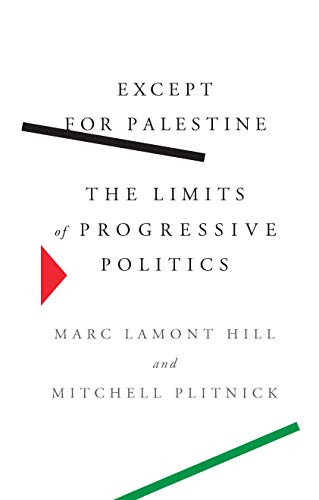The New Map: Energy, Climate, and the Clash Of Nations, Daniel Yergin, Penguin Press, 2020, pp. 492, ISBN: 978-1-59420-643-6
Daniel Yergin established himself as the leading authority on the history of oil with his Pulitzer-Prize winning book The Prize, which charted a century and a half of the oil industry. His subsequent book The Quest, brought the energy sector developments up to date by incorporating China’s rise, the post-9/11 world, and the electric car. The New Map comes at the heels of The Quest and adds little to the story already told.
Yergin structures his book as a series of maps shaped by “dramatic shifts” in the fossil fuel economy. Alternating global supplies and flows of oil and gas, the rise of new producers such as the United States, and the growing role of renewables contribute to reshaping the global geostrategic balance and the consolidation of a multipolar world. Only the most prominent suppliers feature in Yergin’s story. The author makes little to no mention of how oscillating demand, internal opposition to the use of non-renewable energy and international law act to shape countries’ choices. In fact, opposition to the fossil fuel economy is dismissed as infantile, misguided and ludistic when presented with rational state actions. This is a consequence of a narrative that presents history as a series of disconnected events structured around great men.
Yergin begins by re-telling the story of the rise of shale oil and gas production in the US and the pioneers who made it possible. George Mitchell’s unwavering commitment to disprove theories that oil and gas cannot be produced commercially because it would be impossible to make them flow through the dense shale rock represents the rags-to-riches myth of the American Dream. Rather than a story of increasing environmental degradation and habitat destruction, the discovery of shale oil and gas is presented as a purely economic matter of competition between small independents seeking their own piece of dense rock. The requirement to continually drill new wells because of a fast depletion rate led these fortune seekers across the US to shales in Louisiana, Arkansas, Oklahoma and the mighty bedrock the Marcellus, which stretches from Canada down to West Virginia. New technologies were invented, which drilled horizontally, tapping evermore resources and propelling the US to the forefront of global energy supplies, thus offering it geopolitical flexibility while ruining the environment.
Other than resurrecting manufacturing in the US and lowering the trade deficit, the shale revolution locked an increasing number of people’s livelihoods in the fossil fuel economy. Yergin dismisses the environmental effects as insignificant, with the consequences capable of being solved with regulatory oversight. Methane, one of the gasses with the highest impact on global warming, is a by-product of fracking, but Yergin presents it as another potential commodity. The Dakota Access pipeline is presented as an essential aspect of America’s geopolitical power, and protesters who disrupted the last 1320-foot segment, the reader is told, sought to create a media spectacle, rather than to defend indigenous land. Yergin’s account is proven wrong by a federal court, which ruled that the environmental studies done were insufficient and that the indigenous groups were not adequately consulted. Yergin’s overreliance on corporate wisdom colours his analysis of the environmental impact of these same companies’ exploits.
Although Yergin does not shy away from focusing on other countries’ strongmen, he is surprisingly silent on the Trump administration’s impact on the overall American geostrategic positioning. His maps are not connected and present a confusing chronology, failing to show how ancient history informs the present beyond an interesting vignette. The oath of allegiance of Ukranian tribes in the middle ages to the Muscovy is an anecdote, not a crucial piece of the puzzle in explaining Crimea’s annexation. The Chinese general’s 15th century travels to Africa and South-East Asia cannot be seriously used to explain China’s Road and Belt Initiative. The reader has to distill a lot of information to arrive at the analysis of the present predicament. Chronologically, the book is without a center and a coherent thread that ties the narrative together. In several chapters, Yergin deals with great power politics, only to insert an extensive laudatory chapter on the electric car and the engineers behind Tesla.
Yergin is successful in outlining points of contention between great powers and their rivalries. Europe’s energy dependence on Russian gas was targeted by the US to promote its own gas and counter potential Russian influence in European politics. By sanctioning companies working to build the Nord Stream, the US forced Europe to focus on the massive Groningen field in the Netherlands. Interestingly, whereas environmental consequences of fracking are dismissed in the US, Yergin acknowledges that extensive exploitation in the Netherlands led to tremors and earthquakes.
At the same time, Russia ensured that it could build the pipeline with its own technology. Similarly, European hostility to Russia’s annexation of Crimea and the ensuing sanctions forced Russia to pivot to the East. In 2019, Putin and Xi Jinping agreed to a 3000 kilometre Power of Siberia pipeline, set to carry billions of cubic metres of gas to China in a 30-year contract worth $400 billion. The agreement allowed Russia to diversify the demand for its gas and ensure the continuity of revenues. Similarly, sanctions forced it to explore the Yamal and Gydan peninsula above the Arctic Circle to develop the Northern Sea Route and shift from seas patrolled by hostile powers.
China’s insistence on its sovereignty over a collection of islets in the South China Sea is framed as a struggle to control vital trade routes and underground resources. Given that the area is the main thoroughfare for about half of the world’s oil tanker shipments, control of the area would allow China to ensure the supply necessary for its growth. These tankers also pass through the Malacca Strait, an area largely controlled by a powerful US Navy. With the growing hostilities between China and the US, Chinese leadership fears that a disruption of these trade routes by the US Navy would harm the country. Hence, the Belt and Road Initiative aims to connect China by land to its major markets and avoid over-reliance on trade routes it does not control.
For Yergin, oil and gas will remain the dominant sources of energy fueling geopolitics. The heavy reliance of countries and their geopolitical strategies on the continued supply and demand for non-renewable energy prevents energy transitions. Because of the variability of renewable energy and their intermittency, Yergin believes that they will complement the more predictable oil and gas supply, which is expected to increase and stand at 113 million barrels in 2050. Locked capital, depleting oil fields, and the requirement to tap new wells will ensure that oil and gas development outpaces the non-renewable sector’s development. Moreover, given that China leads the world in renewables, Yergin predicts that other major powers will continue to invest in their primary energy supply source, which then becomes a matter of national security. He fails to consider the force of public opinion and activism, which fiercely agitates for non-renewables. With the need to shift to a green economy, new points of contention will emerge. Given that solar and wind technology relies upon rare-earth minerals, which are, in turn, located in a few spots, these are bound to become new sites of great power rivalries.
Ultimately, Yergin’s narrative suffers from the end of history complex, believing that liberal capitalism’s principles will continue structuring the world economy. He does not appear to have come to terms with the role activists play in shaping and transforming energy politics, judging them misguided yet crucial. The risk of new Cold Wars is present, but the urgent need to save the planet and the mobilization of large sections of societies might as well prevent them.




